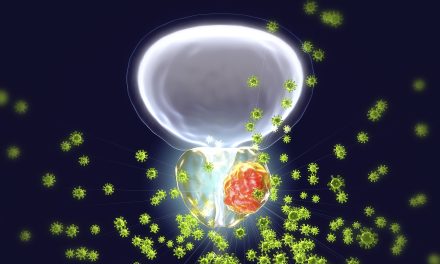Prostate cancer begins in the prostate gland, which is a part of the male reproductive system. It usually starts with changes in the DNA of prostate cells, leading them to grow uncontrollably and form a tumor.
Detecting these changes early is crucial for effective treatment and management.
Certain factors can increase the risk of developing prostate cancer, such as age, family history, and ethnicity. While not all risk factors can be controlled, awareness and regular screenings can help in catching the disease early.
Common symptoms include trouble urinating, blood in urine, or pain in the back and hips.
Treatment varies depending on the stage and severity of the cancer. Options may include surgery, radiation therapy, or hormone therapy. Each approach aims to target the cancer cells while maintaining quality of life.
Ongoing research continues to explore new ways to improve diagnosis and treatment options for those affected by prostate cancer.
Key Takeaways
- DNA changes in prostate cells cause prostate cancer.
- Risk factors include age, family history, and ethnicity.
- Early detection leads to more effective treatment options.
Understanding Prostate Cancer
Prostate cancer begins with changes in the prostate cells, leading to tumor formation. Understanding the prostate’s structure, how cancer cells develop, and how the disease is assessed can offer insights into the condition’s progression.
Anatomy of the Prostate
The prostate is a small gland located below the bladder, surrounding the urethra. It plays a key role in producing seminal fluid, which nourishes and transports sperm.
In men, the prostate is about the size of a walnut and grows as they age. Understanding this anatomy is vital because changes in the prostate can affect urethra function and overall male reproductive health.
In the context of prostate cancer, knowing where the prostate is can help in recognizing symptoms earlier. The gland’s position can lead to urinary issues if a tumor develops, indicating the need for medical evaluation.
Cancer Cell Development
Cancer cells in the prostate begin as normal cells that undergo genetic changes. These alterations cause unchecked growth and can form tumors.
Key mutations like TMPRSS2-ERG gene fusions can be significant in understanding the cancer’s biology. Genetic factors are a crucial part of how prostate cancer develops and progresses.
The Gleason Score and Grade Group classify these cells based on how much they differ from typical cells. A higher Gleason Score indicates more aggressive cancer. Both grading systems provide valuable insights into how quickly the cancer might grow and the best treatment options.
Staging and Grading
Cancer staging determines how advanced the disease is, with prostate cancer stages ranging from 1 to 4. Stage 4 prostate cancer indicates that cancer has spread, or metastasized, beyond the prostate. This stage often involves other organs, such as bones or lymph nodes.
The TNM system is commonly used for staging. T refers to the tumor size, N to the spread to nearby lymph nodes, and M to metastasis.
Understanding staging and grading helps doctors decide on a treatment approach and predict the patient’s prognosis. Accurate staging ensures that both doctors and patients are well-informed about the disease’s severity.
Causes and Risk Factors
Prostate cancer can be influenced by multiple factors, including genetic makeup and lifestyle choices. Understanding these elements can help in assessing individual risk and informing preventive measures.
Genetic Factors
Genetics play a significant role in prostate cancer. Family history is a key element, with men having a close relative with prostate cancer being at a higher risk.
Black men also show greater susceptibility due to genetic predispositions. Mutations in specific genes like BRCA1 and BRCA2 are linked to increased prostate cancer risk.
While age is a common factor, individuals with familial genetic markers might develop the disease earlier. Research continues to explore how these genes and ethnic backgrounds influence prostate cancer development.
Lifestyle and Environmental Factors
Lifestyle choices impact prostate cancer risks significantly. Diets high in red meat and fatty foods are linked to increased risks. Conversely, a balanced diet with fruits and vegetables can be protective.
Obesity is another risk factor, as it can alter hormone levels, potentially spurring cancer growth. Regular exercise might lower the risk by maintaining healthy body weight and promoting hormonal balance.
Environmental elements, such as chemical exposures, are under study for potential links to prostate cancer. This multifaceted approach looks at how daily habits and surroundings contribute to prostate cancer susceptibility.
Signs and Symptoms of Prostate Cancer
Prostate cancer can develop silently, often without obvious symptoms in the early stages. As the disease progresses, certain symptoms may emerge, providing clues to its presence and advancement.
Early Warning Signs
In the early stages of prostate cancer, symptoms might not be noticeable. Often, the disease is detected through screening tests like PSA levels and the digital rectal exam (DRE).
A rise in PSA levels can indicate prostate changes, leading to further investigation. The digital rectal exam helps detect changes in prostate texture or size.
Though early signs are rarely dramatic, subtle indicators such as difficulty starting or stopping urination, frequent urination, especially at night, or a weak urine flow can occur. These symptoms might not seem alarming but can prompt further testing.
Symptoms of Advanced Disease
As prostate cancer advances, more pronounced symptoms can develop. These can include urinary issues like blood in the urine or semen and constant pain in the hips, back, or legs.
Another sign can be erectile dysfunction, which might become more evident as cancer spreads.
Advanced prostate cancer can also cause fatigue and unexplained weight loss, reflecting a more systemic impact. Swelling in the legs or pelvic area is possible too. This progression highlights the importance of early detection to manage and treat the disease effectively.
Diagnosing Prostate Cancer
Diagnosing prostate cancer involves several crucial methods to evaluate and confirm the presence of cancerous cells in the prostate. These methods include PSA testing, various imaging techniques, and biopsy procedures, each playing a key role in accurate diagnosis.
PSA Testing and Analysis
The PSA test measures the level of prostate-specific antigen in the blood. High levels may indicate the presence of prostate cancer, though high PSA can also be caused by other conditions.
The digital rectal exam is often performed alongside the PSA test to check for abnormalities in the prostate.
While elevated PSA levels suggest a need for further investigation, they are not definitive proof of cancer. Variability in PSA levels might result from factors such as age, race, or enlarged prostate.
Doctors may monitor PSA trends over time to make informed decisions about the necessity of further testing. The PSA density and PSA velocity—how quickly PSA levels change—offer additional insights during evaluation.
Imaging Techniques
Imaging is a crucial step in determining the extent of prostate cancer. MRI of the prostate provides detailed images, helping to identify abnormal areas and guide biopsies.
A transrectal ultrasound often offers a clearer view of the prostate and assists in measuring its size.
For advanced assessment, scans like CT and PET may identify cancer spread to other tissues. A bone scan can detect metastatic cancer in the bones.
Each imaging method offers valuable specifics that contribute to a comprehensive understanding of the cancer’s progression and helps in planning effective treatment strategies.
Biopsy Procedures
A biopsy remains the definitive method for diagnosing prostate cancer. During this procedure, a small sample of prostate tissue is removed for microscopic examination.
The transrectal ultrasound-guided biopsy is the most common method, where a needle extracts tissue through the rectum using ultrasound guidance.
In some cases, a transperineal biopsy may be used, which collects samples through the skin between the anus and scrotum. Pathologists then examine these tissue samples to look for cancer cells.
Results from the biopsy help determine the grade and stage of prostate cancer, guiding the treatment plan.
Treatment Options for Prostate Cancer
Treatment for prostate cancer varies based on the stage and individual circumstances. Options include localized treatments, systemic therapies, and newer experimental approaches. It’s crucial to tailor the treatment plan to each patient’s specific condition and needs.
Localized Treatments
Localized treatments focus on cancer that has not spread beyond the prostate. Surgery is a common approach, specifically the radical prostatectomy, where the prostate gland is removed. This option suits patients with cancer confined to the prostate.
Radiation therapy comes next, including external beam radiation which directs high-energy rays at the prostate to kill cancer cells. Another method is brachytherapy, which involves placing radioactive seeds inside the prostate.
Cryotherapy uses extreme cold to freeze and destroy cancerous tissue, while high-intensity focused ultrasound (HIFU) directs high-energy sound waves at the tumor. These methods can be effective depending on cancer progression and patient health.
Systemic Treatments
Systemic treatments target cancer cells throughout the body and are essential when the disease has spread.
Hormone therapy aims to reduce hormone levels or block their effects, which helps slow cancer growth. This option might be paired with active surveillance or watchful waiting for less aggressive cases.
For more aggressive cancers, chemotherapy uses drugs to kill rapidly growing cells, though it often has significant side effects.
Targeted drugs are another option, aiming directly at cancer cells without affecting normal cells. These drugs are chosen based on specific characteristics of a patient’s cancer, offering a personalized approach to treatment.
Emerging Therapies and Clinical Trials
Progress in prostate cancer treatment is ongoing, with clinical trials exploring new methods. Patients with few options might consider these trials for access to innovative therapies.
New drug combinations, immunotherapies, and advanced hormonal therapies are under investigation.
Participation in clinical trials offers patients a chance to contribute to research and might provide beneficial treatments not yet widely available.
Ongoing studies continue to better understand prostate cancer, making the decision to join a trial significant for both personal and broader medical advancements.
Understanding Treatment Decisions
Making decisions about prostate cancer treatment involves assessing risks, considering personal preferences, and understanding possible outcomes and complications. Each factor plays a crucial role in shaping a treatment plan that aligns with the patient’s needs and circumstances.
Risk Assessment and Management
Risk assessment starts with identifying risk factors for prostate cancer, such as age, family history, and genetic predispositions. The patient’s specific risk group helps guide the treatment options considered.
Medical professionals evaluate not only the cancer’s stage but also the patient’s overall health and life expectancy. These assessments determine whether aggressive treatment is needed or if active surveillance is more appropriate.
It’s crucial to balance effective treatment with managing potential side effects.
Patient-Driven Decision Making
Patient preferences significantly influence treatment decisions. Each patient may prioritize different aspects of their treatment, such as effectiveness, quality of life, or potential side effects.
Engaging in open discussions allows patients to express their concerns and expectations.
Patients often participate in decision aids, tools designed to help them weigh the benefits and risks of different treatments. This approach ensures that their values and preferences are a central part of the decision-making process, potentially leading to more satisfactory outcomes.
Potential Outcomes and Complications
Understanding potential outcomes and complications is vital when selecting a treatment plan. Treatments like surgery, radiation, or hormone therapy vary in effectiveness and side effects.
They might impact urinary, bowel, or sexual function differently, which are important considerations for many patients.
Doctors provide detailed information about the likelihood of success and possible complications. This helps patients prepare for any lifestyle changes they may face after treatment.
Being informed allows them to make decisions that align with their personal goals and improve their overall quality of life.
Coping with Prostate Cancer
Managing prostate cancer can be challenging, but there are strategies that can help improve quality of life.
Support groups, mental health resources, and effective symptom management play crucial roles.
Psychological Support
Having a strong support system is important for men with prostate cancer. They often benefit from talking to others who have gone through similar experiences.
Support groups offer a chance to share feelings and advice. Participating in these groups can reduce feelings of isolation and improve mental health.
Counseling and therapy are also helpful. Professional mental health support can address anxiety, depression, and stress related to the diagnosis.
These sessions provide coping strategies and emotional relief. Encouraging open communication with loved ones is likewise beneficial for emotional support.
Physical and Social Well-being
Maintaining physical health is vital for managing prostate cancer. A balanced diet and regular exercise can help enhance overall health and energy levels.
Exercise can also boost mood and support better sleep patterns. It is advised to consult healthcare providers for personalized exercise plans that suit individual needs and capabilities.
Social connections play a significant role in well-being. Staying engaged with friends, family, and community activities can provide emotional strength.
Social support has been linked to better health outcomes and higher life quality. Spending time with loved ones and participating in community events can offer significant emotional benefits.
Pain Management
Coping with pain is an essential aspect of prostate cancer care.
Effective pain management strategies include medication, physical therapy, and alternative therapies like acupuncture. Medications should be taken as prescribed, and any side effects should be reported to healthcare providers.
Palliative care focuses on relieving pain and improving comfort. It involves a comprehensive approach to manage symptoms and reduce distress.
Patients should discuss their pain levels regularly with doctors to ensure they receive appropriate treatments. Finding the right balance of therapies can significantly improve daily activities and emotional well-being.
Current Research and Developments
Prostate cancer research has made significant strides in recent years. Key areas of focus include the role of genetic factors in treatment, new methods for managing the disease, and preventive programs aimed at reducing risk.
Genetics and Personalized Medicine
Research emphasizes the impact of genetic factors on prostate cancer. Understanding gene mutations, including DNA changes and acquired mutations, is crucial.
Scientists use this information to develop personalized medicine approaches. This involves tailoring treatments based on individual genetic profiles.
Such strategies aim to improve outcomes by targeting the specific genetic alterations present in a patient’s cancer. Personalized medicine holds promise in reducing side effects and enhancing effectiveness.
Ongoing research and clinical trials explore new genetic markers that could predict cancer behavior and treatment responses, offering hope for more precise therapeutic options in the future.
Advancements in Treatment Options
Recent advances in treatment focus on innovative therapies that offer better outcomes with fewer side effects.
Targeted therapies, which attack specific cancer cells by focusing on known mutations, are continuing to develop. Additionally, immunotherapy, which harnesses the body’s own immune system to combat cancer, shows promising results.
New drugs and combinations are currently being tested in clinical trials. These treatments aim to improve survival rates and quality of life. Researchers are also exploring the potential of existing medications to treat prostate cancer more effectively.
The development of novel treatment strategies remains a primary goal in ongoing research efforts.
Preventive Strategies and Education
Preventive strategies involve understanding risk factors and educating the public about them. Regular screenings and early detection play a critical role in managing prostate cancer risk.
Education programs focus on informing individuals about the importance of lifestyle factors, such as diet and exercise, which can impact cancer risk.
Researchers study how preventive measures can be incorporated into daily life to reduce chances of developing prostate cancer. Awareness campaigns also strive to inform men about genetic risks and family history considerations.
Comprehensive preventive strategies aim to empower individuals with knowledge, potentially lowering the incidence of prostate cancer.
Conclusion
Addressing prostate cancer involves understanding various aspects of the disease.
Early detection plays a crucial role in improving the prognosis and increasing survival rates. Regular screenings and discussions with healthcare providers are essential for early identification.
When it comes to treating prostate cancer, there are several options available, including surgery, radiation, and hormone therapy. Each treatment plan is tailored to the individual’s condition, ensuring personalized care.
Prevention strategies may include lifestyle changes such as a healthy diet and regular exercise. Although prevention is not guaranteed, these steps could lower the risk.
Ongoing research is key to improving understanding and treatment of prostate cancer. Institutions like the Mayo Clinic are at the forefront of this exploration, striving to find more effective methods and support for patients.
Frequently Asked Questions
Prostate cancer can be challenging to detect early, but knowing the signs and risk factors is important. While prevention is not always possible, steps can be taken to reduce risk. Advances in detection and treatment continue to improve outcomes for those affected.
What are the early warning signs of prostate cancer?
Some early warning signs include difficulty urinating, a weak urine stream, frequent urination, especially at night, or pain during urination. Blood in urine or semen may also occur. However, early stages often present no symptoms, making regular screening crucial.
Can prostate cancer be prevented, and if so, how?
Complete prevention might not be possible, but a healthy lifestyle may reduce risk. Eating a diet rich in fruits and vegetables, maintaining a healthy weight, and regular exercise can be beneficial. Some studies suggest a diet low in dairy and red meat might help.
What factors contribute to the risk of developing prostate cancer?
Age is a significant factor, with higher risks in men over 50. Family history and genetics also play a role. African American men face a higher risk than men of other races. Diet and lifestyle choices may also influence risk.
How can prostate cancer be detected in its early stages?
Early detection often involves screening tests such as the prostate-specific antigen (PSA) blood test and digital rectal exam. These can indicate potential issues before symptoms arise. Learn more about these tests from sources like this article on screening.
What are the treatment options available for prostate cancer?
Treatment options vary depending on the stage and include surgery, radiation therapy, hormone therapy, and chemotherapy. Some cases may be best managed with active surveillance. Each approach has its benefits and potential side effects.
Is prostate cancer treatable when diagnosed at an advanced stage?
Advanced prostate cancer may still be treatable, though it requires more aggressive methods.
Options can include hormone therapy, chemotherapy, and newer targeted therapies.
Research continues to improve treatments and outcomes for advanced cases.















